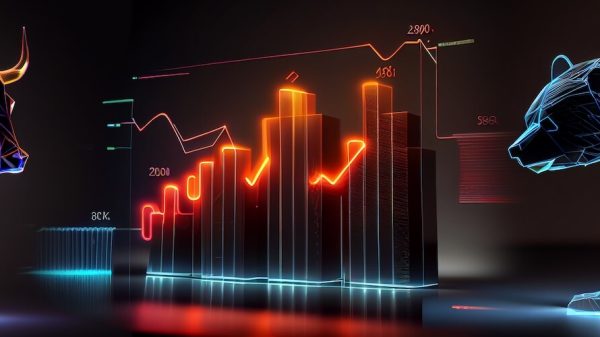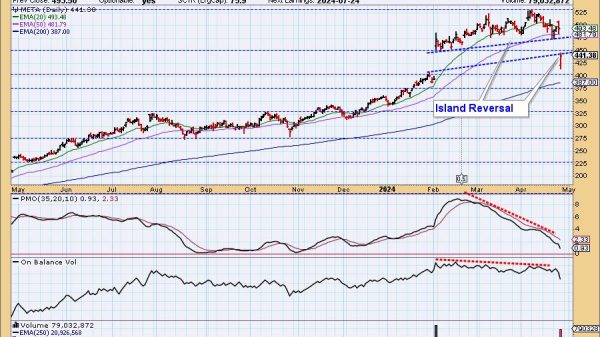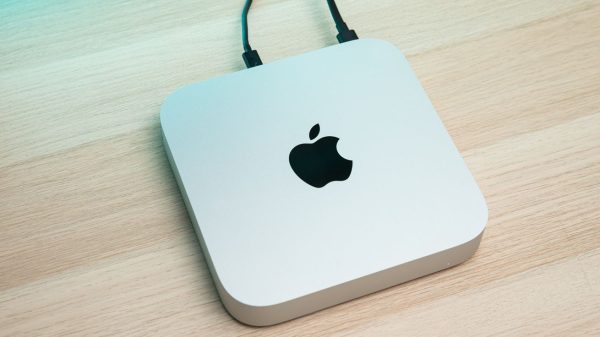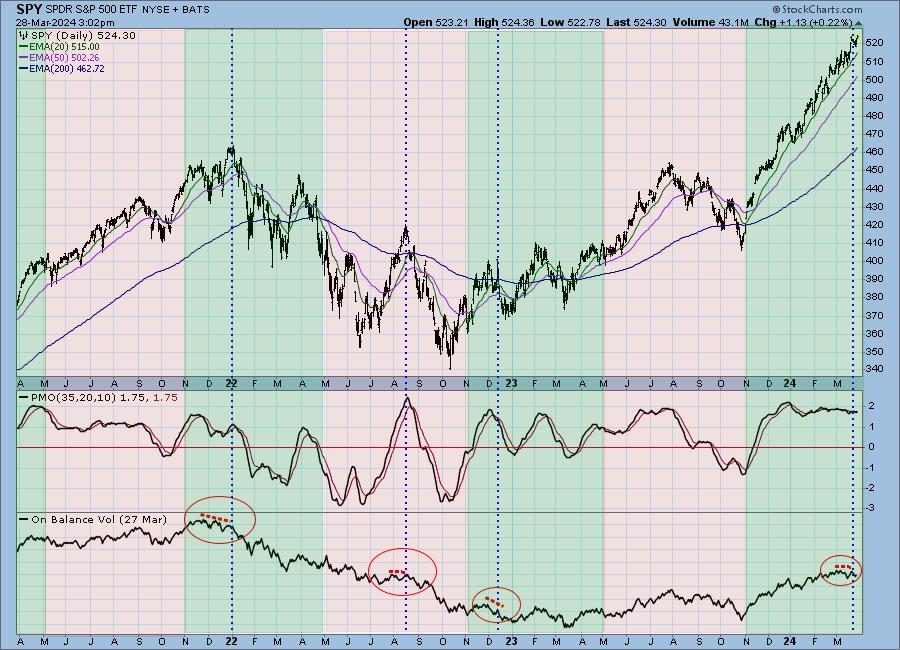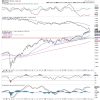The late Yale Hirsch (Stock Trader’s Almanac) has long been known for identifying the six-month periods of positive and negative seasonality in the stock market. The positive period is November through April, and the negative period is May through October. We are currently in a positive period, which has one more month to go. Unfortunately, the OBV (On-Balance Volume) chart is saying that April may not be all that positive.
The chart below shows the positive periods (green), and the negative periods (pink), and we can see that the market rarely accommodates that rigid schedule. It loosely fits positive and negative behavior within those brackets, but those periods begin and end pretty much when they feel like it. The current positive period, however, has been exceptionally compliant, beginning at the end of October and continuing with unrelenting positivity through March. Can this possibly continue for another month? Of course it can, but there are signs on the OBV chart that say it may end sooner than that.

OBV (On-Balance Volume) is a cumulative line to (or from) which the day’s total volume is added or subtracted based upon whether price closes up or down. Normally, OBV will merely confirm price movement, making lows or highs that match price movement. Boring. What we look for are instances where OBV fails to confirm price. A good example of that on the chart is at the end of 2021 when SPY was making a series of higher tops, but OBV only made a series of lower tops, failing to confirm price movement. Basically, price moved higher, but volume began to thin out. I have marked three other instances where OBV failed to confirm price, and one of them is for the current period.
Conclusion: There are six-month periods of positive and negative seasonality that appear to influence the direction of prices. During the current positive period, beginning in November, the stock market has been unrelentingly positive, but the OBV chart shows that volume has been trending negatively. It could be that the rising trend in prices is about to end.
Learn more about DecisionPoint.com:
Watch the latest episode of the DecisionPointTrading Room on DP’s YouTube channel here!
Try us out for two weeks with a trial subscription!
Use coupon code: DPTRIAL2 at checkout!
Technical Analysis is a windsock, not a crystal ball. –Carl Swenlin
(c) Copyright 2024 DecisionPoint.com
Disclaimer: This blog is for educational purposes only and should not be construed as financial advice. The ideas and strategies should never be used without first assessing your own personal and financial situation, or without consulting a financial professional. Any opinions expressed herein are solely those of the author, and do not in any way represent the views or opinions of any other person or entity.
DecisionPoint is not a registered investment advisor. Investment and trading decisions are solely your responsibility. DecisionPoint newsletters, blogs or website materials should NOT be interpreted as a recommendation or solicitation to buy or sell any security or to take any specific action.
Helpful DecisionPoint Links:
Price Momentum Oscillator (PMO)
Swenlin Trading Oscillators (STO-B and STO-V)






